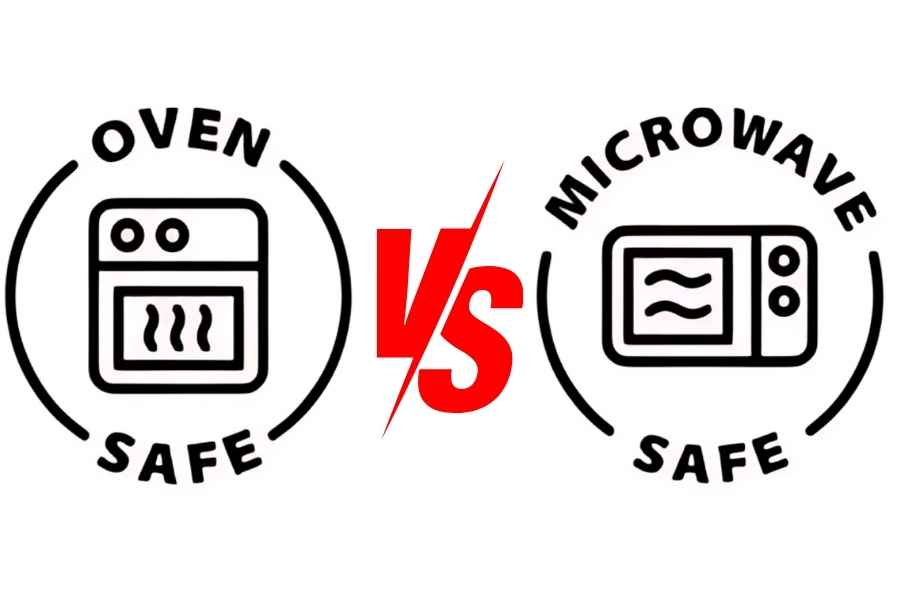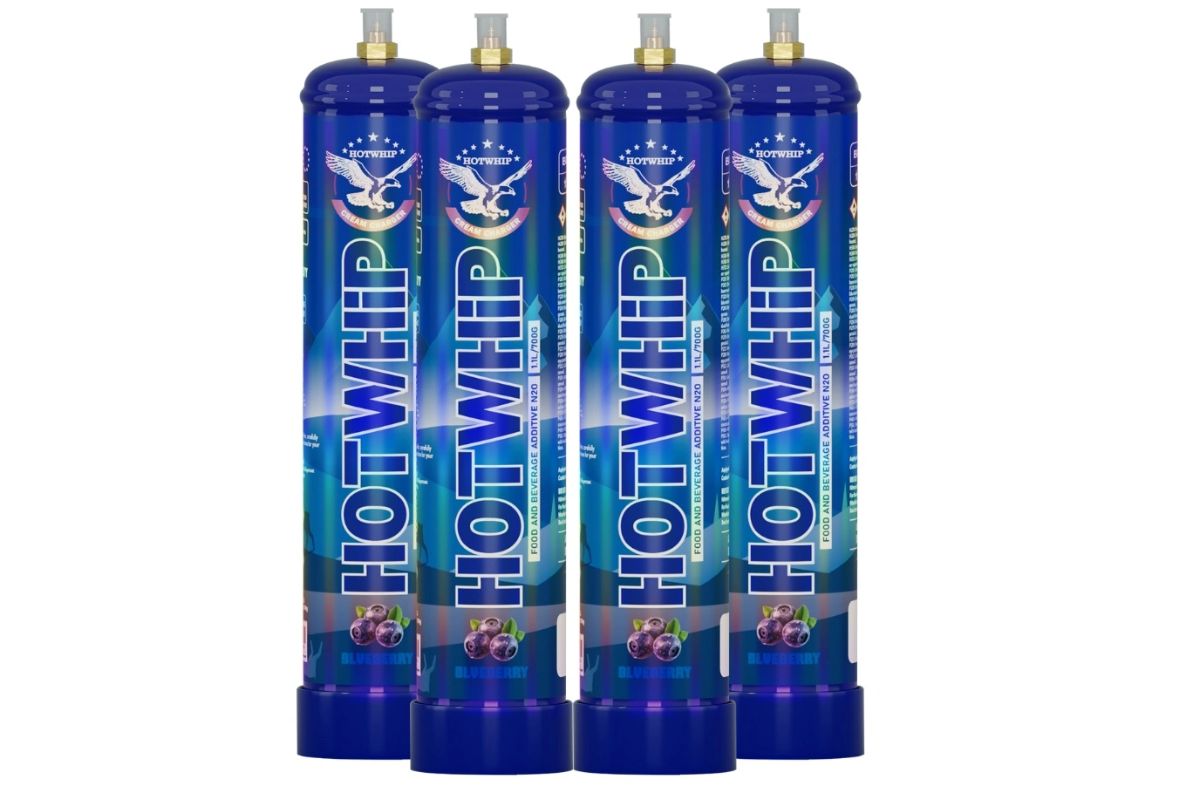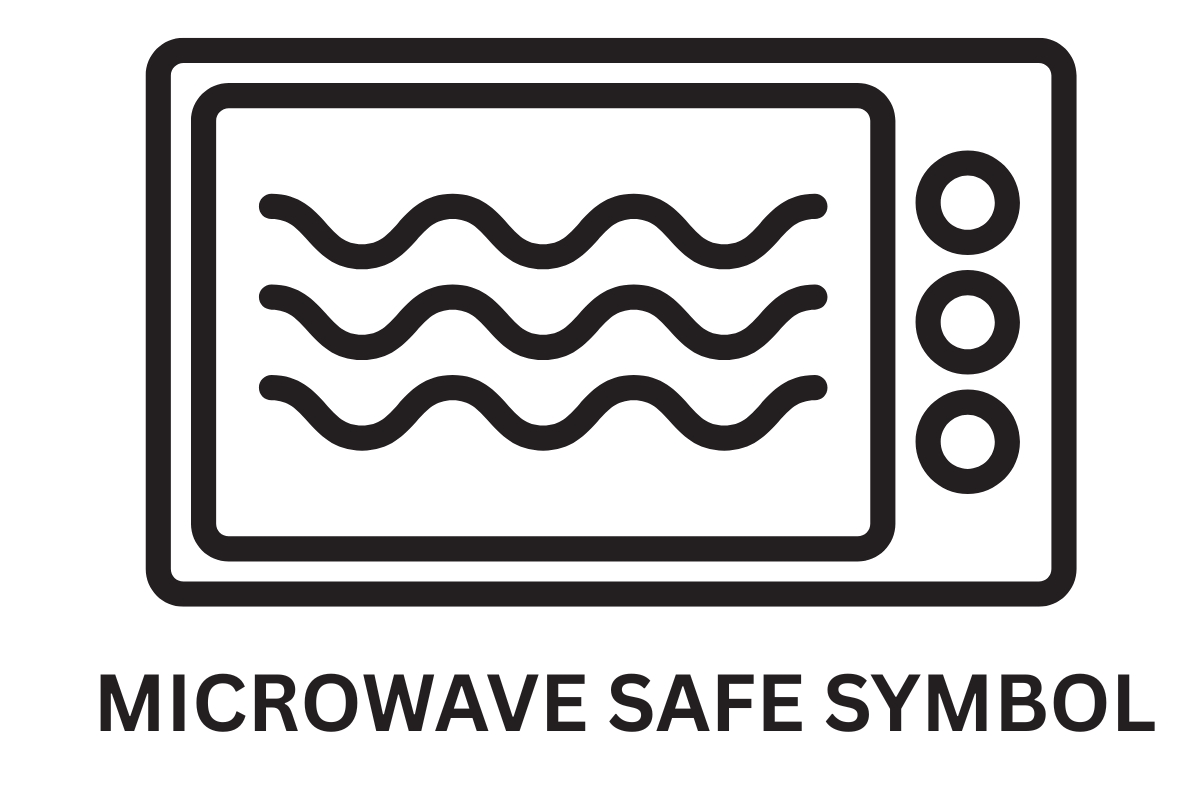A few years ago, I accidentally microwaved a bowl that had a beautiful metallic trim. I thought it would be fine since it was a sturdy glass bowl, but as soon as I hit start, sparks flew inside the microwave. It was a scary moment that made me realize how easy it is to confuse oven-safe cookware with microwave-safe options.
Understanding the difference between oven-safe and microwave-safe cookware isn’t always straightforward. Some materials work well in one appliance but are dangerous in the other. In this blog, I’ll share how to identify cookware designed for each purpose, explain the differences, and provide tips for safer cooking. By the end, you’ll feel confident knowing exactly which cookware belongs where!
Table of Contents
ToggleWhat Does Oven-Safe Mean?
Cookware labeled “oven-safe” is designed to withstand high, consistent temperatures without breaking, warping, or releasing harmful substances. It’s perfect for baking, roasting, and broiling, as ovens evenly distribute heat over time. However, not all cookware is built for these conditions, and choosing the right material is critical.
How Oven-Safe Cookware Looks
- Material: Oven-safe cookware is made from sturdy, heat-resistant materials like stainless steel, cast iron, or tempered glass. These materials can handle the high heat of ovens, typically up to 450°F or more.
- Handles: Look for handles made from metal or silicone, as these can endure oven temperatures. Avoid cookware with plastic or wooden handles, as they can melt or burn.
- Labels and Symbols: Most oven-safe cookware has a clear symbol or label indicating its suitability. This often includes an oven icon or the words “oven-safe,” sometimes accompanied by the maximum temperature it can handle.

Check out my in-depth guides on oven safe:
Best Materials for Oven Safe Cookware: A Complete Breakdown
Oven Safe Symbol: A Guide to Meaning, Looks, and How to Find?
How to Identify Oven Safe Symbols on Popular Cookware Brands?
Oven Safe Symbols vs. Other Cookware Markings: A Complete Guide
Oven Safe Symbol is Missing: What to Do + How to Find
What Does Microwave-Safe Mean?
Microwave-safe cookware is designed to let microwaves pass through the material. This heats the food evenly and prevents damage to both the cookware and the appliance. Unlike oven-safe cookware, microwave-safe items must not include materials like metal that reflect or absorb microwave energy.
How Microwave-Safe Cookware Looks
- Material: Microwave-safe items are lightweight and made from plastic, silicone, or glass. They do not include metallic components. These materials let microwaves pass through, heating the food safely without sparking or overheating.
- No Metal Parts: Microwave-safe cookware will never have metal handles, edges, or decorative details, as metal can cause sparks and damage the appliance.
- Labels and Symbols: Look for symbols like a wave icon or labels saying “microwave-safe.” These indicators confirm that the cookware won’t melt, warp, or cause hazards when used in the microwave.

Key Differences Between Oven-Safe and Microwave-Safe Cookware
It is important to understand the key differences between oven-safe and microwave-safe cookware. This helps prevent accidents and allows for smarter cooking choices. Here’s how they differ:
1. Material Differences
Oven-safe cookware is built to withstand high temperatures, often above 400°F. It is typically made from stainless steel, cast iron, or tempered glass. However, materials with metal can spark and cause damage if used in a microwave.
Cast Iron vs. Stainless Steel: The Best Oven Safe Cookware Material
Microwave-safe cookware is made to handle heat from electromagnetic waves but not high temperatures. Lightweight plastic and silicone are ideal for microwaves but can melt or warp in an oven.
2. Usage Purpose
The main purpose of oven-safe cookware is for high-heat tasks like baking, roasting, or broiling. These require durability and the ability to withstand consistent heat over time.
Microwave-safe cookware, however, is ideal for reheating leftovers, defrosting frozen items, or quick low-heat cooking. It’s not built for extended exposure to high heat, as it’s more focused on efficiency and safety in a microwave environment.
3. Heat Distribution
Ovens distribute heat evenly across the entire dish, cooking food from the outside in. This is why materials like cast iron or tempered glass are perfect—they retain and distribute heat consistently.
Microwaves, in contrast, heat food using electromagnetic waves. This method cooks from the inside out, and the material’s ability to transmit waves safely is more important than its heat retention capability.
3 Most Common Mistakes People Make
1. Using Metal Cookware in the Microwave
One of the most dangerous mistakes is placing metal cookware in the microwave. Metal reflects microwave energy, creating sparks and potential fires. I learned this early in my cooking journey when I absentmindedly microwaved a bowl with a metallic rim—thankfully, I caught it quickly!
2. Placing Microwave-Safe Plastic in the Oven
Microwave-safe plastics are not designed for high heat. Placing them in the oven can result in melting or even the release of harmful chemicals into your food. I’ve made this mistake with a plastic container that I assumed would work—it didn’t, and it left a melted mess in my oven.
3. Assuming All Glass Cookware Is Both Oven- and Microwave-Safe
Not all glass is created equal. While tempered glass can handle both the oven and microwave, regular glass may shatter under high oven heat or sudden temperature changes. A friend once tried baking a pie in a decorative glass dish, only to have it crack halfway through.
Can You Trust Manufacturer Claims About Oven Safe Symbols?
Tips from My Experience
Over the years, I’ve learned some valuable lessons (sometimes the hard way) about using oven- and microwave-safe cookware. Here are a few tips to help you avoid my mistakes:
- Always Double-Check Labels: I make it a habit to inspect cookware for symbols or manufacturer guidelines. If I don’t see a clear label, I look it up online before using it in an oven or microwave.
- Test Safely First: When I’m unsure about microwave safety, I do a simple test by microwaving the dish with a small cup of water next to it for 30 seconds. If there’s no sparking or excessive heat, it’s likely safe for the microwave.
- Invest in Multipurpose Cookware: Over the years, I’ve gravitated toward cookware that’s safe for both ovens and microwaves, like high-quality tempered glass or silicone bakeware. It saves me from guessing which dish is safe for which appliance.
- Avoid Thermal Shock: This is critical for glass cookware. Let it cool naturally before transferring it between hot or cold environments. I’ve had dishes crack from pouring cold water into a hot pan—it’s not worth the risk.
By keeping these tips in mind, you’ll not only protect your cookware but also make your cooking experience safer and stress-free.
5 Simple Ways to Tell If Your Cookware is Oven Safe
FAQs:
u003cstrongu003eIs microwave-safe also oven-safe?u003c/strongu003e
No, microwave-safe does not mean oven-safe. Microwave-safe items can withstand microwave heating but may not endure the high temperatures of an oven. Using them in the oven can lead to melting or damage.
u003cstrongu003eAre microwave-safe bowls oven-safe?u003c/strongu003e
Not necessarily. Many microwave-safe bowls, especially those made of plastic or certain ceramics, are not designed for oven use and can melt or crack under high heat. Always check the manufacturer’s guidelines before using them in the oven.
u003cstrongu003eIs microwave-safe the same as oven-safe?u003c/strongu003e
No, microwave-safe and oven-safe are not the same. Microwave-safe items are designed to handle microwave energy, while oven-safe items can withstand the higher temperatures of an oven. Using microwave-safe items in the oven can result in damage or safety hazards.
u003cstrongu003eWhat does u0022microwave-safeu0022 mean?u003c/strongu003e
Microwave-safeu0022 means that a container or dish can be used in a microwave oven without melting, warping, or releasing harmful chemicals into the food. These items are designed to withstand the specific type of heating microwaves use.
u003cstrongu003eCan I use glass cookware in both the oven and microwave?u003c/strongu003e
Some glass cookware is safe for both oven and microwave use, particularly if it’s labeled as heat-resistant or tempered. However, always check for any manufacturer guidelines, as some glassware may not be suitable for high oven temperatures.
u003cstrongu003eWhat happens if I use oven-safe cookware in the microwave?u003c/strongu003e
Using oven-safe cookware in the microwave can be hazardous, especially if the cookware contains metal. Metal can cause sparks and potentially damage the microwave. Even non-metallic oven-safe items may not be suitable for microwave use due to their thickness or material composition.
6 Common Mistakes to Avoid When Using Oven Safe Cookware






